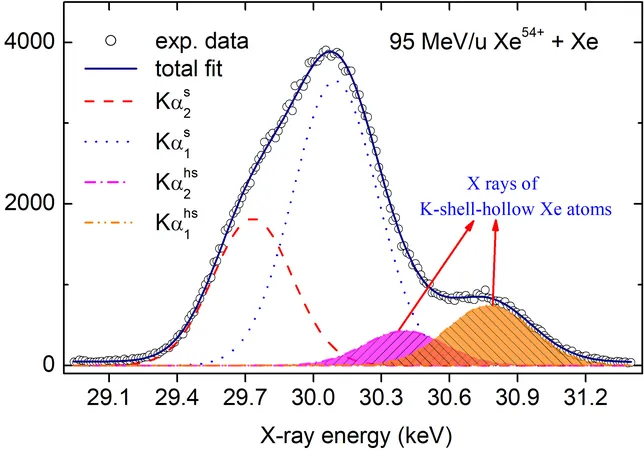
Breakthrough in Heavy Hollow Atoms: A Game Changer for Quantum Physics!
2025-07-09
Author: Wei
Unraveling the Mysteries of Hollow Atoms
Hollow atoms, with their intriguing structure of missing electrons in the inner shells while retaining filled outer shells, are becoming the spotlight of modern physics research. Understanding how these unique atoms are produced and how they behave offers valuable insights into quantum electrodynamics and quantum many-body interactions. Exciting applications await in areas like inner-shell ionization X-ray lasers and high-energy density physics!
Revolutionary Production Method Confirmed!
In a groundbreaking study, researchers from the Institute of Modern Physics (IMP) in China have discovered an efficient method for creating heavy hollow atoms. They successfully confirmed that collisions between fully stripped heavy ions and atoms yield these fascinating structures in substantial quantities. This innovative approach stands to enhance our grasp of hollow atom dynamics and their applications.
High-Tech Tools for Deeper Insights
To advance their research, the team developed a cutting-edge high-resolution planar crystal spectrometer, enabling them to analyze the fine structure of X-rays emitted during inner-shell multi-ionization. This tool is not just high-tech; its design dramatically increases the precision and convenience of measurements!
Impressive Yield from Unique Experiments
During their experiments, the team orchestrated collisions between fully stripped xenon ions and xenon targets using the sophisticated cooling storage ring at the Heavy Ion Research Facility in Lanzhou (HIRFL). The results were staggering—hollow xenon atoms were produced at a remarkable yield, soaring 28.6% higher than traditional K-shell single-vacancy xenon atoms.
The Spectrometer: A Game Changer in Research
The newly designed spectrometer is nothing short of a game changer. With a flexible dynamic range of 0.53–19.3 keV and a bandwidth of 0.04–6.58 keV, it redefines what’s possible in atomic spectroscopy. Its energy resolution exceeds 102 across the entire operational range, and the use of mosaic crystals boosts detection efficiency by over 20 times compared to older models.
Setting the Stage for Future Discoveries
These revolutionary advancements in the study of heavy hollow atoms will pave the way for more in-depth research at esteemed facilities like HIRFL, the Low Energy High Intensity Heavy Ion Accelerator Facility (LEAF), and the High Intensity Heavy-Ion Accelerator Facility (HIAF). The future of quantum physics is bright!




 Brasil (PT)
Brasil (PT)
 Canada (EN)
Canada (EN)
 Chile (ES)
Chile (ES)
 Česko (CS)
Česko (CS)
 대한민국 (KO)
대한민국 (KO)
 España (ES)
España (ES)
 France (FR)
France (FR)
 Hong Kong (EN)
Hong Kong (EN)
 Italia (IT)
Italia (IT)
 日本 (JA)
日本 (JA)
 Magyarország (HU)
Magyarország (HU)
 Norge (NO)
Norge (NO)
 Polska (PL)
Polska (PL)
 Schweiz (DE)
Schweiz (DE)
 Singapore (EN)
Singapore (EN)
 Sverige (SV)
Sverige (SV)
 Suomi (FI)
Suomi (FI)
 Türkiye (TR)
Türkiye (TR)
 الإمارات العربية المتحدة (AR)
الإمارات العربية المتحدة (AR)